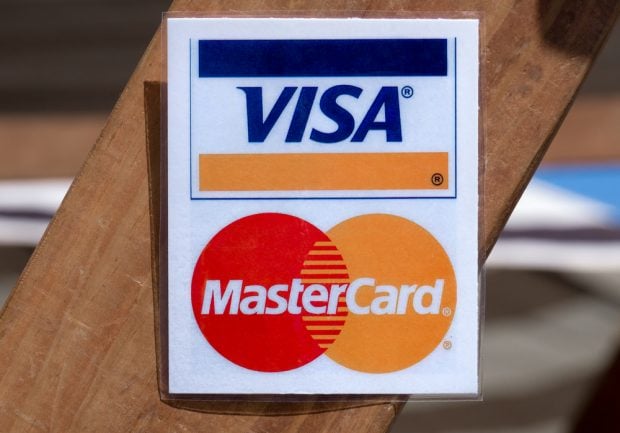 Following a period of relativeinaction in the payments industry caused by uncertainty on theeconomic, regulatory, and technological fronts, 2014 has come outof the blocks fast by comparison.
Following a period of relativeinaction in the payments industry caused by uncertainty on theeconomic, regulatory, and technological fronts, 2014 has come outof the blocks fast by comparison.
Yet with so much happening in fields as diverse as paymentssecurity, the mobile arena, and emerging technologies such as EMVand mobile wallets it can be a challenge for credit unions toseparate the signal from the noise in determining which issues toprioritize.
|Build your priorities around these trends
|Economic indicators are improving and growth prospects in bothcredit and debit look brighter for 2014 than they have in the pastfew years.
|The legal and regulatory climate for both credit and debit willbe relatively stable during the coming year. Select retailers areappealing the credit card interchange settlement and appellatecourts are conducting hearings on Regulation II of the DurbinAmendment, which impacts debit card interchange. No new legislationis anticipated; however, some new political attention has arisen inthe wake of the recent Target data breach.
|The pace of technological innovation will shake out some winnersand losers. In 2014, issuers will spend significant timeinvestigating and understanding various technology solutions withrespect to their card programs. While some may have an “if it ain'tbroke, why fix it” mentality toward payments, the reality is thatcredit unions must invest the time to keep up with the latestchanges in the marketplace to keep on par or ahead of largerissuers while simultaneously gauging the expectations of theirmembers.
|Given these broad trends, here is how your credit union canexpect to see them play out across these specific areas.
|Credit and debit card momentum
|Driven by continued economic recovery, rebounding consumerconfidence, sustained low interest rates and the settling of theregulatory and political environment, growth prospects for bothcredit and debit cards look better for 2014 than they have in thepast few years.
|We look for cards to accelerate growth in 2014 and expectorganic growth in spending on all cards to grow, particularly interms of discretionary spend that may have been deferred during therecession.
|We believe that a massive opportunity exists for credit unionsto transition check and cash transactions to debit, as highlightedby the recently released 2013 Federal Reserve Payments Studyindicating that 1.3 billion check payments were made at thepoint-of-sale in 2012.
|EMV anti-fraud program status
|With only 20 months until the October 2015 liability shift,there appears to be an uneven trajectory of implementation for bothretailers and issuers. Using the Canadian EMV rollout as anexample, it is estimated to have taken 10 years to reach fullsaturation point.
|We believe that as long as the industry continues to operatewithout an EMV mandate and anticipates added cost, complexity andconsumer impact, the implementation of EMV in the United States maycontinue at an elongated pace.
|However, events such as the recent data breach at Target maycause both issuers and merchants alike to escalate the pace ofimplementation. Political involvement can end updriving a mandatebut could also impact issuer preferences, previous regulatoryrulings, consumer confusion and time lines.
|The prevalence of multiple debit PIN networks, coupled with theU.S. District Court ruling requiring multiple networks bytransaction type is further complicating the matter.
|Mobile wallets
|Mobile wallets will be in the spotlight in 2014 as paymentsnetworks, merchants, wireless companies and others develop andrefine their offerings. To move past the initial wave of earlyadopters and to reach a tipping point, the carrot for thesestakeholders is access to some very rich data. But for mobilewallets to take off, the stakeholders need to do a better job ofconvincing consumers of the value added.
|Ironically, the industry has invested decades' worth ofeducation and incentives to make consumers comfortable with plasticcard usage and those highly successful efforts may prove difficultand expensive to reverse.
|Mobile wallet applications will need to be accepted universallyand offer security features that meet or beat those that areoffered with plastic cards. This becomes even more criticalas consumer awareness of security breaches is heightened by therecent data breach at Target and other merchants.
|Because many consumers are happy using their plastic cards,emphasis will need to be made on value-added features that comewith mobile payments, such as incremental convenience, discountoffers, rewards, in addition to the coolness factor.
|Norman Patrick is PSCU's director of debit consulting forAdvisors Plus. He can be reached at 727-299-2523 or [email protected],
Complete your profile to continue reading and get FREE access to CUTimes.com, part of your ALM digital membership.
Your access to unlimited CUTimes.com content isn’t changing.
Once you are an ALM digital member, you’ll receive:
- Critical CUTimes.com information including comprehensive product and service provider listings via the Marketplace Directory, CU Careers, resources from industry leaders, webcasts, and breaking news, analysis and more with our informative Newsletters.
- Exclusive discounts on ALM and CU Times events.
- Access to other award-winning ALM websites including Law.com and GlobeSt.com.
Already have an account? Sign In
© 2024 ALM Global, LLC, All Rights Reserved. Request academic re-use from www.copyright.com. All other uses, submit a request to [email protected]. For more information visit Asset & Logo Licensing.









